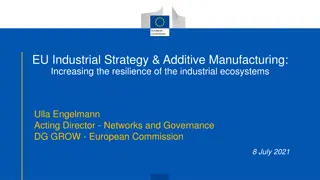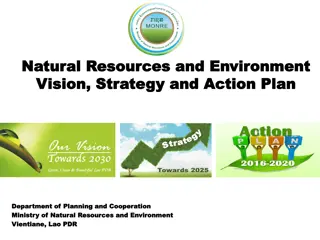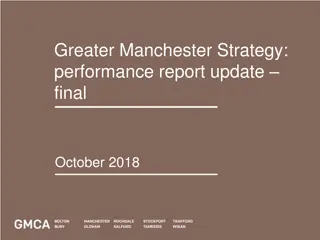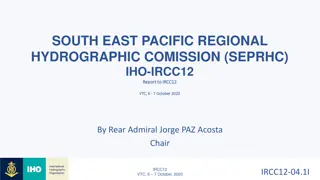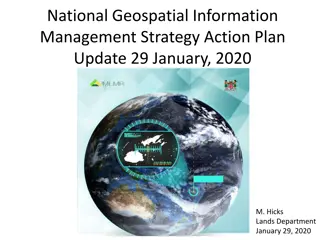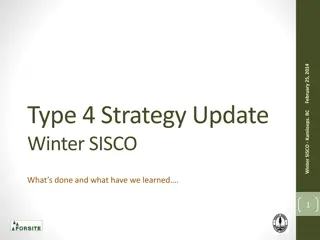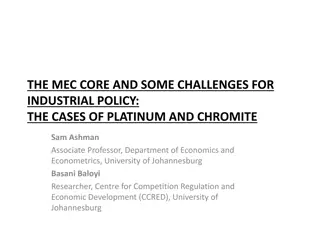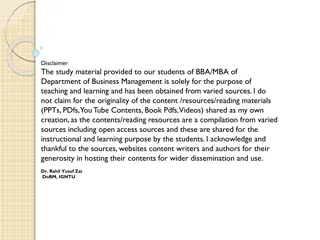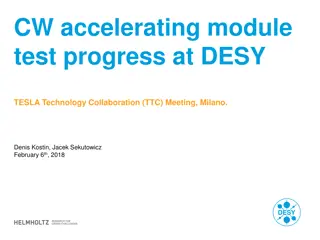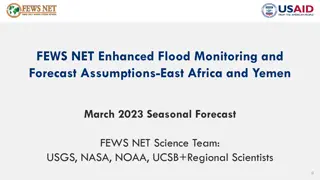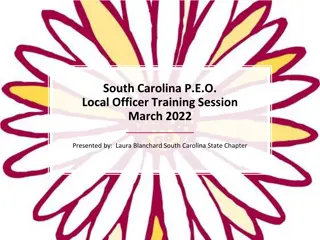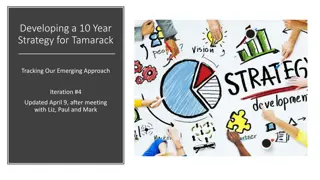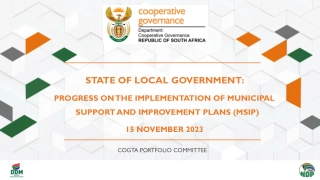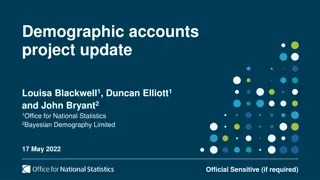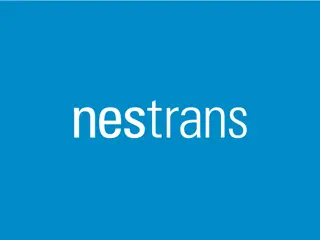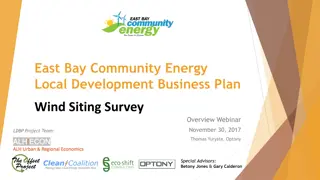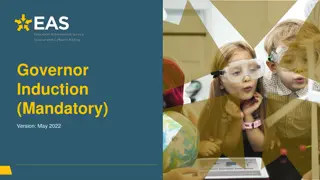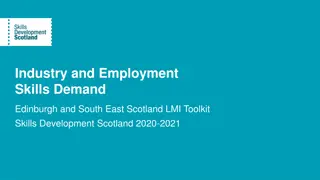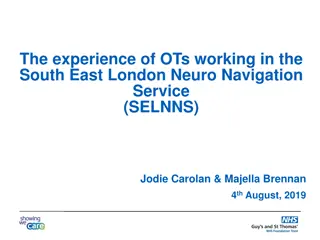South East Local Industrial Strategy: Vision and Progress Update
The South East Local Industrial Strategy aims to address challenges and leverage opportunities in sectors like Creative, Life Sciences, Maritime, and Low Carbon. With strengths in enterprise culture and transport networks, the region faces productivity challenges and issues such as dispersed assets and housing affordability. The strategy focuses on innovation, the Coastal and Rural contribution to growth, and the region's research and education facilities.
Uploaded on Sep 27, 2024 | 0 Views
Download Presentation

Please find below an Image/Link to download the presentation.
The content on the website is provided AS IS for your information and personal use only. It may not be sold, licensed, or shared on other websites without obtaining consent from the author. Download presentation by click this link. If you encounter any issues during the download, it is possible that the publisher has removed the file from their server.
E N D
Presentation Transcript
South East Local Industrial Strategy Rural Working Group Presenter: Helen Russell / Sharon Spicer Date: 8thOctober 2019
Five Foundations Grand Challenges 2.4% R&D target Technical Educatio n & Training Ageing society Artificial intelligence & data Housing Deals & TCF* Clean Growth Invest- ment Funds Stronge r Towns & FHSF^ Future of mobility
Working towards a local industrial strategy Vision and Priorities Strategic Opportunitie s & Challenges South East Local Industrial Strategy South East Local Industrial Strategy Grand Challenges Foundations of Productivity
Timelines July September October - November December March 2020 Draft Local Industrial Strategy Finalise Evidence Base LIS Stage 2: Developing Propositions/ Intervention Stage 3: Government co- design Stage 1: Evidence base creation & review Finalisation & Publication Draft Evidence Base Report We are currently here!
Initial observations Strengths Home to growing sectors Creative, Life Sciences, Maritime and Low Carbon Has a strong culture of Enterprise Internationally important transport network, more so after Brexit Strong track record of attracting Inward Investment A broad range of economic assets Weaknesses Assets are clustered around London fringe, less so wider SELEP area GVA data reveals that SELEP has a productivity challenge to overcome Poor Economic Performance of the Coast Significant pressure on the transport network Threats Fast paced population growth Persistent and acute areas of deprivation Business base is overwhelmingly made of SMEs Dispersed nature of the geography mean assets are dispersed and competing Housing affordability and challenges to deliver housing growth Opportunities The creation of a stronger innovation culture 60% of the UK s Garden Communities programme are located in SELEP Transport Gateways will play a different role post Brexit Greater Coastal and Rural contribution to economic growth A powerhouse of research 9 Higher Education facilities
Economy and Productivity Overview Productivity Issue Potential opportunity / intervention Low GVA indicators across the board, linked to SELEP s sectoral profile suggests that SELEP s workforce and economic activity is less productive and efficient than elsewhere Evidence points to particular growth opportunities within creative/digital, marine/maritime, life sciences and low carbon technology how to maximise these growth opportunities and enable local clusters/employers/sectors to thrive How can SELEP better position itself to respond to macro trends such as digitalisation, the continuing need to reduce carbon consumption and maximise resource efficiency, and ageing demographics? Significant geographical variation in productivity performance across SELEP How to spread strong GVA/productivity performance across more of the SELEP area (geographically and sectorally) Presence of particular sector concentrations and clusters across SELEP reflect inherent economic assets, strengths and locational advantages - bespoke strategies are therefore required to support productivity growth across different sectors
Ideas Productivity Issue Potential opportunity / intervention Low levels of R&D intensity and R&D spending amongst SELEP s business base How can more firms be encouraged to engage and invest as part of growing a stronger innovation culture? How to engage science and technology sectors in R&D activity? R&D expenditure by HE sector amongst the lowest in the country How can we support HE institutions to increase R&D expenditure, including to respond to the Grand Challenges? Scope to invest in the wider innovation ecosystem, centred around the U9 and their existing networks SELEP s share of innovation funding lower than its share of population and business stock How can collaboration between SELEP s HE and business base be improved to better respond to opportunities and draw down more funding? Opportunities for creating large scale collaborative R&D programmes in SELEP e.g. in agri-food, transport & logistics, life science & med-tech, construction and low carbon
People Productivity Issue Potential opportunity / intervention Relatively low proportion of working-age population and an ageing society across many parts of SELEP How can SELEP s coastal communities in particular attract broader demographic mix and more economically active population? Enabling skilled young workers to locate within SELEP is critical to its future competitiveness as a business location How can we harness the power of innovation to meet the needs of SELEP s ageing society? How can we better promote HE/FE opportunities to encourage upskilling amongst local population? Targeting coastal communities in particular where skills levels are generally lowest SELEP s population lacks many of the higher level skills that will be crucial to drive productivity growth in the future Significant spatial variation in higher level skills across SELEP area Pockets of persistent socio-economic deprivation, constraining the ability of some residents to contribute to the economy/labour market Addressing these long term challenges offers potential to deliver significant net gains for SELEP, by increasing labour market participation and reducing welfare dependency
Business Environment Productivity Issue Potential opportunity / intervention Levels of business base growth and start- up rates are trailing behind the national average SELEP s business base underperforms when it comes to scaling up, constraining the ability of highly productive firms to grow and maximise their economic output How can SELEP encourage and support business start-ups? How can existing SELEP firms be supported to overcome barriers and obstacles to scale-up and growth? This might be linked to other opportunities around skills development/upskilling, accessing innovation funding and quality business space Low business representation is most productive sector groups (e.g. ICT, finance and insurance), and some of the more productive sectors are less productive in SELEP than they are nationally How can SELEP attract/target high productivity sectors to locate and grow here? How can SELEP s unique assets and USPs be exploited as part of this offer? Maximising the potential of SELEP s innovation clusters (e.g. science parks, EZs) to support and facilitate commercial spin- offs/business start-ups linked to high tech, high value sector activity recognising that inward investment interventions are unlikely to deliver sufficient a step change in isolation
Infrastructure Productivity Issue Potential opportunity / intervention SELEP s transport infrastructure (in particular road and rail) suffers from congestion despite receiving major investment The international gateway role played by SELEP underlines the case for future investment in the area s infrastructure networks, particularly post-Brexit How can SELEP s unique infrastructure assets be harnessed/maximised to boost local and national productivity? A number of major long-term infrastructure priorities are well articulated (e.g. Lower Thames Crossing, road corridor improvements, GEML, Crossrail to Ebbsfleet, HS1 to East Sussex), but what is the relative role of each in driving productivity improvements? Ensuring the continued resilience of SELEP s transport networks is a local and national challenge, with a number of strategic infrastructure priorities identified Identified risks from flooding and coastal erosion across many coastal parts of SELEP as the climate continues to change Opportunities for local research institutions to respond to climate change challenges through pioneering innovative resource management solutions Targeting productivity improvements through resource efficiency, spearheaded by SELEP s existing strengths in nuclear and offshore wind energy Explore the potential for climate change resilience to act as a driver for clean growth and emerging sector opportunities
Place Productivity Issue Potential opportunity / intervention Dispersed nature of SELEP s geography, economic areas and assets, posing challenges to achieving critical mass of economic activity, agglomeration and collaboration between different organisations No single centre dominates this can provide opportunities for local economic distinctiveness ad for different centres within SELEP to develop their own unique economic identity Opportunities exist to maximise growth potential and collaboration within existing business clusters/hubs (e.g. EZs, science parks and other business parks) Significant opportunities to accelerate housing (and wider mixed use) delivery through new settlements and urban extensions How can these new settlements contribute to business-led productivity growth through provision of high quality business space/accommodation, and also act as test beds for new technologies and growth sectors? How can SELEP s rural and coastal economies more effectively harness natural capital, heritage and cultural assets? Particular opportunities around creative industries, marine and maritime, agri-food and low carbon technology Technological change and quality of life offer have the potential to create new opportunities e.g. ability to work remotely opens up new employment choices in coastal and rural parts of the SELEP area Housing provision key challenges relating to housing supply, both in terms of quantity and relative affordability Evidence points to particular challenges to growth and prosperity in coastal and rural areas, which represent a significant proportion of the SELEP area
Routes to Engagement: LEP Events Workshop Date Internal stakeholder focused on contributions into the process and progress of the LIS development via established LEP/Federated structures. Internal Stakeholder Regular meetings Monthly Thematic events -aimed primarily at business, academia and other partners to focus on developing qualitative evidence and specific interventions around the strategic opportunities and Grand Challenges. Partner Various planned events Throughout 10th October Developing Future Skills (via Skills Advisory Panel) Partner events planning local sessions with LAs, businesses, education, and business intermediaries, to consider the evidence and interventions that are emerging and input to the development. 14th October Foundations of Productivity 5th November Building new communities 5th November Modelling future connectivity A wider summit may also take place to engage with businesses and others on the LIS overall. 7th November Accelerating business productivity and growth All feedback will be integrated into the evidence base 7th November Maximising natural assets
Grand Challenges AI & Data We will put the UK at the forefront of the AI and data revolution Clean Growth We will maximise the advantages for UK industry from the global shift to clean growth We will make the UK a global centre for artificial intelligence and data-driven innovation We will develop smart systems for cheap and clean energy across power, heating and transport We will transform construction techniques to dramatically improve efficiency We will make our energy-intensive industries competitive in the clean economy We will put the UK at the forefront of the global move to high-efficiency agriculture We will make the UK the global standard-setter for finance that supports clean growth We will help people develop the skills needed for jobs of the future We will support sectors to boost their productivity through artificial intelligence and data analytic technologies We will lead the world in safe and ethical use of data and artificial intelligence giving confidence and clarity to citizens and business
Grand Challenges Future of Mobility We will become a world leader in shaping the future of mobility We will establish a flexible regulatory framework to encourage new modes of transport and new business models We will seize the opportunities and address the challenges of moving from hydrocarbon to zero emission vehicles We will prepare for a future of new mobility services, increased autonomy, journey-sharing and a blurring of the distinctions between private and public transport We will explore ways to use data to accelerate development of new mobility services and enable the more effective operation of our transport system Ageing Society We will harness the power of innovation to help meet the needs of an ageing society We will support new products and services for the growing global population of older people, meeting important social needs and realising the business opportunity for the UK We will support sectors to adapt to a changing and ageing workforce We will leverage our health data to improve health outcomes and UK leadership in life sciences We will support care providers to adapt their business models to changing demands, encouraging new models of care to develop and flourish
Questions for discussion 1. What are the unique opportunities for SELEP linked to our rural economies? 2. What infrastructure improvements are needed to support future economic growth and productivity in rural areas? 3. What support is needed to help businesses innovation and growth? 4. How do you think SELEP could contribute to the grand challenges?






